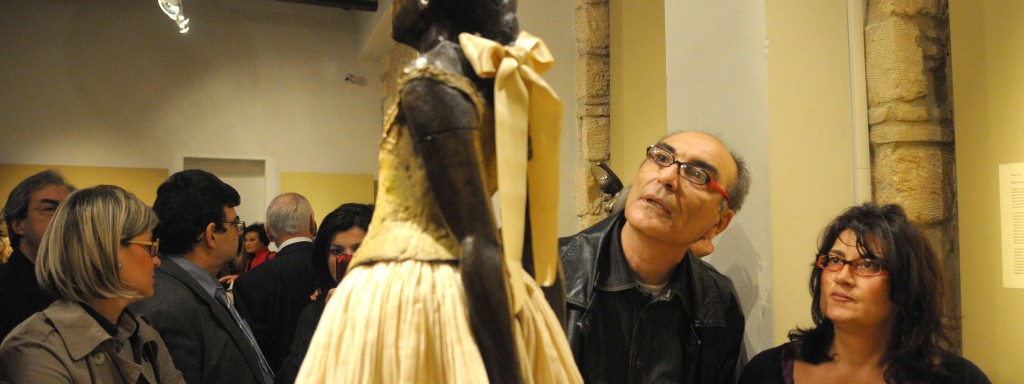The Little Dancer, Aged Fourteen (La Petite Danseuse de Quatorze Ans) from the M.T. Abraham Foundation collection, to be viewed at the Herakleidon Museum, Athens, is a recent bronze belonging with73 additional sculptures by Edgar Degas. A special edition catalogue will be published in three languages and will include photographic images and explanatory notes for each piece, in addition to fascinating essays discussing the relationship between Edgar Degas’ two- and three-dimensional works with appropriate comparisons and variables that help identify the importance of the Degas sculptures.
There is some evidence that Degas did not view his sculpture as much more than a means to refine his understanding of subjects and to work through problems for his paintings. He was concerned with grasping the essential qualities of movement, both human and equine, and was very much affected by the photographic studies of horses done by Eadweard Muybridge, who was his contemporary. Degas was himself a significant innovator in artistic technique and took great interest in the startling advances in photography at the time. It has been suggested that as his eyesight deteriorated over the last half of his life, he turned more to sculpture for his artistic expression. However, he always maintained that he had sculpted for most of his life, and this appears to be the case. It is unclear why following the showing of The Little Dancer Degas never exhibited his sculpture again, although a number of explanations have been advanced. The reception of this singular work elicited a great deal of criticism as well as praise, and the stir created by its inclusion in the impressionist exhibition in 1881 may have itself been offensive to Degas. The wax figure, which is about two-thirds life-size, is striking in various ways.
There is a disturbing allure in the enigmatic expression of a girl on the threshold of adulthood; eyes half closed in a pugnacious, upward gaze, struck in a carelessly haughty stance, arms stretched behind her, foot forward; the pose itself was regarded as highly audacious. The unusual use of garments and other materials –the dancer is adorned with a real tutu, bodice and — all flew in the face of convention to the point where some critics took great umbrage at the showing. Yet, Degas was not one to court public opinion – he evinced an outright contempt for unquestioning conformity — and so it seems unlikely that the critical storm raised by his first sculptural exhibition would have discouraged him from further showings. The exhibition opens November 27, 2009.
Information for Visitors
Location: 16, Thissio, 118 51 Athens, Greece
Opening Hours: Monday: closed, Tuesday-Saturday: 13:00-21:00, Sunday: 11:00-19:00.
Web: www.herakleidon-art.gr



Comments are closed.